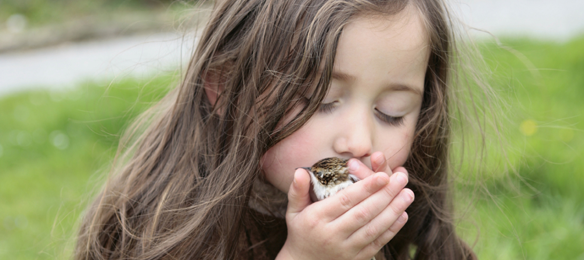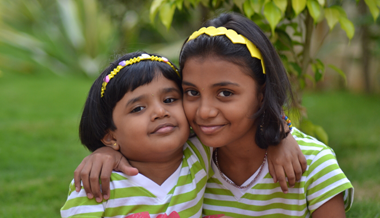Newsletter: octubre 2013
Exploring Empathy at the Dinner Table

Seeing that it’s Bullying Prevention Month, we’ve dedicated our October newsletter to cultivating bullying’s archenemy: empathy. At the heart of this hardwired and important quality is the ability to relate deeply to another person’s experience. So, for example, when your child sees you a bit stressed out at dinnertime, he or she empathizes with you and offers to help (we can dream, can’t we?).
Seriously though, being able to «get» someone—to imagine what it feels like to be in another person’s shoes—is a key deterrent to bullying. What follows are ideas from Dr. Anne Fishel for modeling and fostering empathy at our favorite place: the dinner table. In later sections, you’ll also find a game suggestion and conversation starters that help to do the same. And for even more resources and help around bullying, check out the Pacer National Bullying Prevention Center.
- Make sure everyone gets a chance to talk and feels that his or her words and experience matter. In practical terms, this means that during dinner only one person talks at a time, eye contact is made with the person who is speaking, you occasionally register that you «get» how the speaker is feeling by nodding or smiling, and no one is competing with gadgets and screens for attention.
- Name that feeling. Naming your children’s feelings helps them feel understood, and labeling your own models this skill. Tell a story about your day and describe how your feelings changed throughout your experience. When your child tells a story, ask how he felt at different points, or suggest a feeling («You sound really happy with your new teacher»). Avoid asking too many questions about feelings, however, which can have the opposite intended effect and actually shut down your child’s willingness to share. Questions need to be a light seasoning to the conversation, like a pinch of cayenne, rather than a heavy dosing.
- Emphasize the positive. When children share their stories at the table, point out and praise their empathic behavior toward siblings, friends, pets, and others. And highlight how others have shown empathy toward them.
- Try on another person’s perspective. Beyond helping kids identify their own feelings, developing empathy is also about imagining another person’s perspective. After dinner try a role-playing game, where kids can act as a parent, a police officer or a teacher, for example. Even board games and checkers require kids to consider what their opponent may be thinking, which research has shown is connected to the development of empathy.
![]()
 Food
Food
It’s harvest time and we wanted to check in with friends across the country to see what they’re cooking from their native harvests. Here are three delicious recipes that reflect the agricultural diversity we found from Maine, to Minnesota, to Maui. Enjoy!
Maine: Autumn Chicken with Cranberries
Minnesota: Chicken Waldorf Salad
Maui: Avocado and Mango Salad
![]()
Fun
 «Guess the Emotion»
«Guess the Emotion»
Guess that Emotion
This is a good game to help children learn to identify feelings. Have one person leave the table for a minute. Once she leaves, the rest of the family decides on an emotion (or you can pick out of a hat).
Some examples include:
- Happy
- Angry
- Sad
- Mad
- Excited
- Nervous
When the missing family member returns to the table, the rest of the family eats and acts with that feeling in mind. For example, if the emotion is «worry,» someone might say «I have so much homework tonight I’m never going to get to sleep.» Or you can make it a bit more challenging for older kids by allowing only body language and facial expression to convey emotion, or even just facial expression alone.
![]()
Conversation
 As our children head back to school, they will meet people who are different from them – people with different backgrounds, traditions, experiences and beliefs. Approaching and talking to people who are different from us offers an incredible opportunity to expand our view of the world. Our conversation starters this month are all about dealing with difference – and exploring qualities such as being open-minded, adaptable and tolerant of others.
As our children head back to school, they will meet people who are different from them – people with different backgrounds, traditions, experiences and beliefs. Approaching and talking to people who are different from us offers an incredible opportunity to expand our view of the world. Our conversation starters this month are all about dealing with difference – and exploring qualities such as being open-minded, adaptable and tolerant of others.
2-7 Years Old:
- If you had superpowers, what would they be and how would you use them to help people?
- Talk about something nice someone did for you this week, or something that made you feel better.
- Have you ever been teased by a friend? How did it make you feel? How do you think a friend feels when he or she gets teased?
8-13 Years Old:
- «‘Don’t judge a man until you have walked a mile in his shoes.» What does that phrase mean to you?
- Is there someone you know who is having a hard time right now? What is that they are going through? What might you do to let them know you understand or want to understand how they are feeling?
- Think of a book or movie character and try to explain what he or she feels. How does the character demonstrate empathy? Do you relate to this or another character? How?
14-100 Years Old:
- At what age do you think you first understood the true meaning of empathy? Why—what happened?
- Do you have a role model for empathy? This can be someone you know personally, or not. How is he or she a role model?
- Actor Javier Bardem said, «I think we are living in selfish times. I’m the first one to say that I’m the most selfish. We live in the so-called ‘first world,’ and we may be first in a lot of things like technology, but we are behind in empathy.» Do you agree or disagree with this statement? Explain.
Recent Newsletters
- Home, and Homemade, for the Holidays - diciembre 2025
- Thanksgiving Traditions, Old and New - noviembre 2025
- Food as Comfort and Care - octubre 2025
- The State of Family Dinner - septiembre 2025
- Back to School Dinner Success - agosto 2025
- What’s Your Meal Planning Personality? - julio 2025
- A New Guide to Gathering - junio 2025
- Celebrating 15 Years of The Family Dinner Project - mayo 2025
- New Research: Family Dinners Boost Happiness - abril 2025
- Just the Two of Us - marzo 2025
- Ways to Build Community Through Dinner - febrero 2025
- The Power of Intentions - enero 2025
